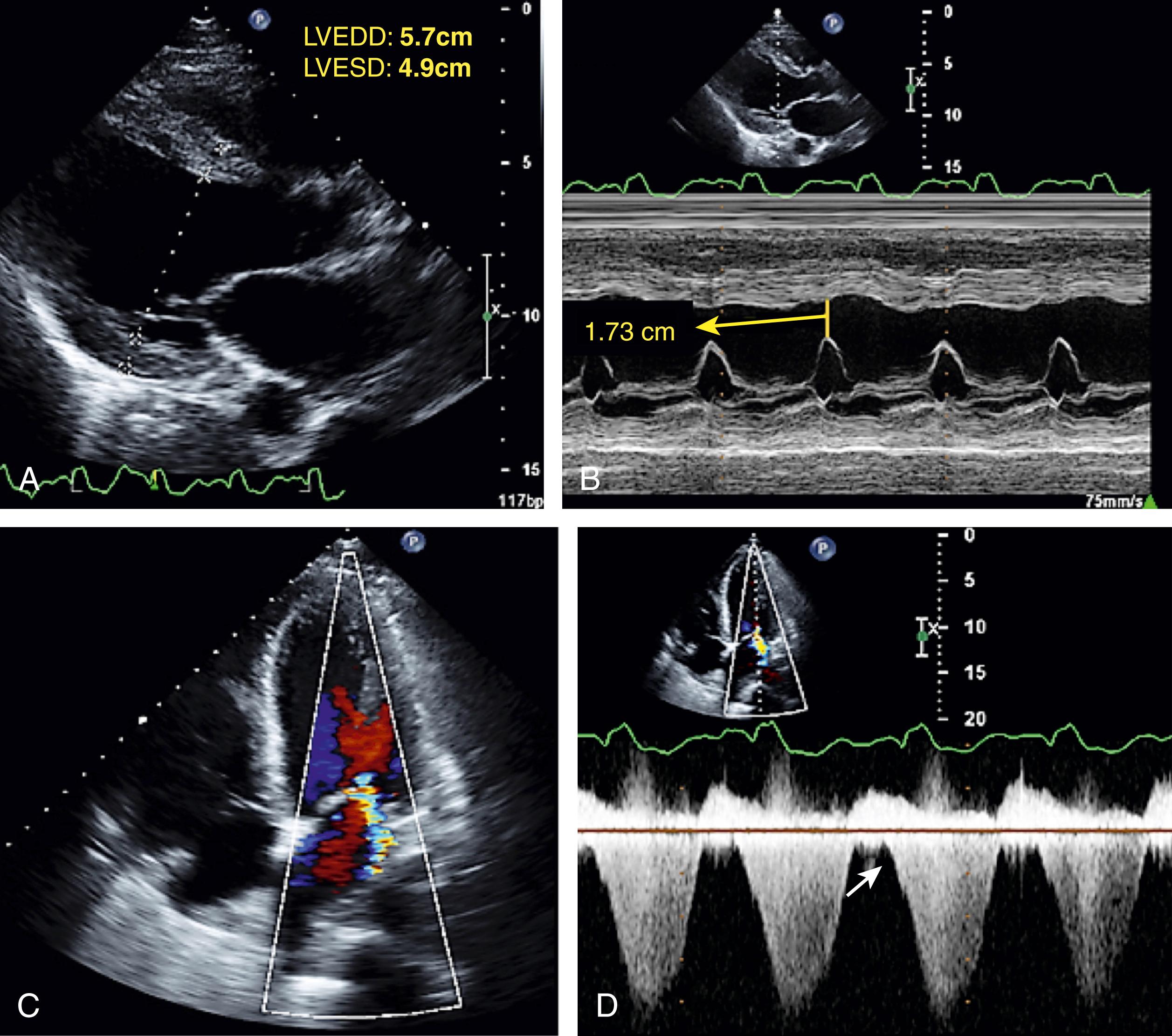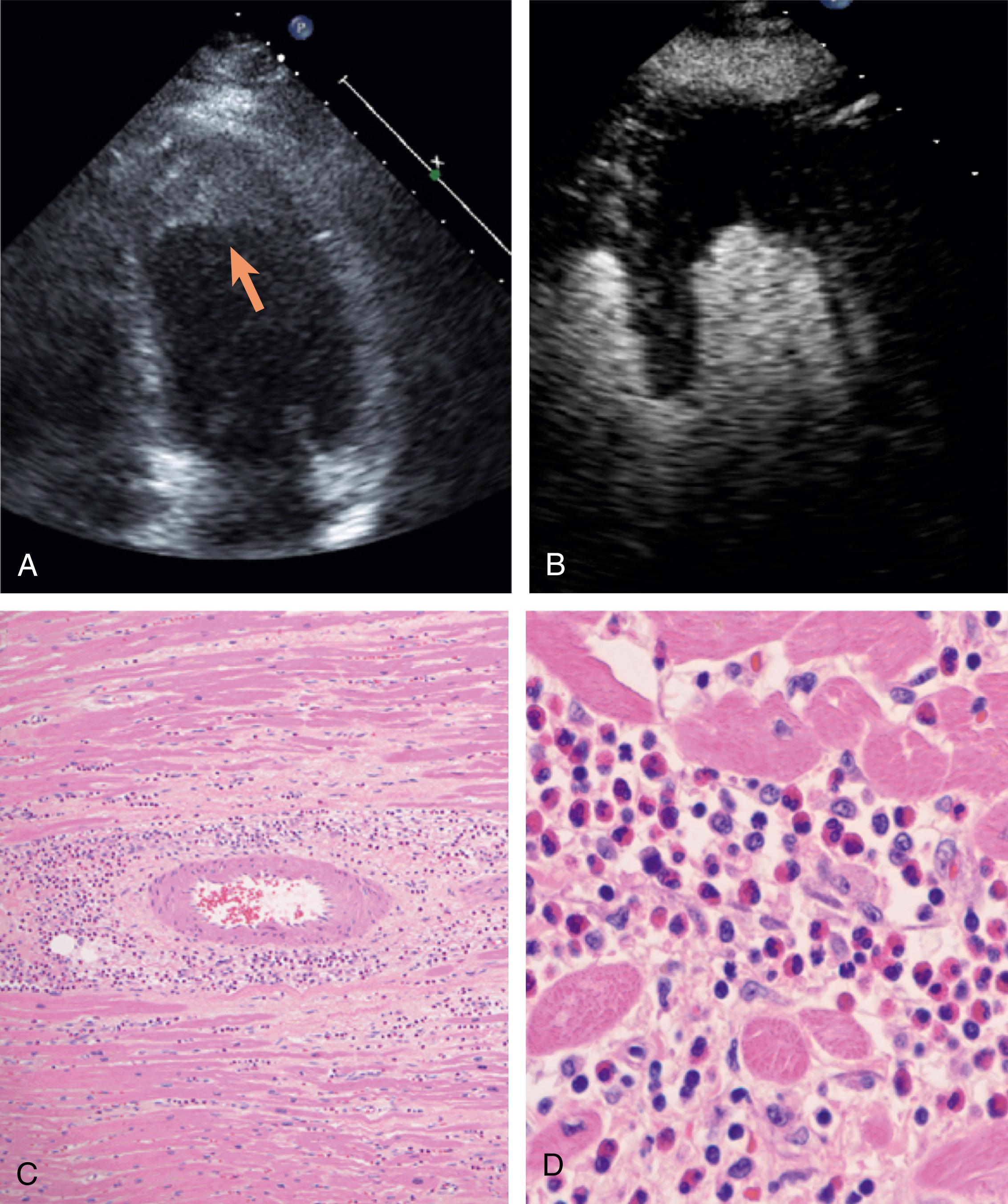Physical Address
304 North Cardinal St.
Dorchester Center, MA 02124
Myocarditis is a pathophysiological condition defined as infiltration of the myocardium by inflammatory cells with associated degenerative and necrotic changes not typical of ischemic injury. In severe cases, myocarditis is characterized by a rapid onset of heart failure symptoms. Although some patients with myocarditis may be asymptomatic, most patients present with chest pain, dyspnea, palpitations, and arrhythmias, which are symptoms seen with other cardiac diseases. Therefore, making the diagnosis of myocarditis depends on having a high index of suspicion and being able to distinguish this disease entity from other causes such as ischemic cardiac disease, infiltrative cardiomyopathy, and valvular heart disease. The definitive diagnosis of myocarditis is made by endomyocardial biopsy (EMB), in which histology identifies myocardial inflammation and cellular necrosis. However, EMB is an invasive procedure with potential risks, including cardiac perforation and tamponade, that should be done by experienced operators. EMB is often not recommended for the initial assessment of the disease. Noninvasive diagnostic assessment of myocarditis largely depends on two-dimensional (2D) transthoracic echocardiography (TTE) and cardiac magnetic resonance imaging (CMRI), which are the two primary imaging modalities that are commonly used for the diagnosis of myocarditis.
Myocarditis most often results from injury induced by a heightened immune response to infection or inflammatory stimuli. The causes include viruses, drugs, toxins, and autoimmune diseases ( Table 65.1 ).
| Infection | Bacteria | Hemophilus influenzae , mycobacterium |
| Spirochete | Borrelia spp., Leptospira spp. | |
| Protozoa | Trypanosoma cruzi | |
| Viral | Coxsackie A and B, echovirus, influenza A and B, respiratory syncytial virus, human immunodeficiency virus-1 | |
| Parvovirus B19, adenovirus, cytomegalovirus, herpes simplex virus, human herpes virus-6, Epstein-Barr virus | ||
| Drugs and toxins | Immune checkpoint inhibitors, anthracyclines, fluorouracil, catecholamines, interleukin-2, trastuzumab, cyclophosphamide | |
| Copper, iron, lead | ||
| Scorpion and wasp stings, snake and spider bites | ||
| Radiation | ||
| Immune mediated | Lymphocytic, giant cell | |
| Systemic lupus erythematosus, rheumatoid arthritis, Churg-Strauss syndrome, Kawasaki disease, hypereosinophilic syndrome, inflammatory bowel disease, scleroderma, polymyositis, myasthenia gravis, sarcoidosis, Wegner granulomatosis | ||
| Graft rejection | ||
Echocardiography is important to rule out other cardiac conditions such as valve disease as well as for serial evaluation of left ventricular (LV) size and function. Although no specific echocardiographic findings are pathognomonic for myocarditis and findings often resemble those found in dilated cardiomyopathy, some features can be used to aid in diagnosis. The primary assessment of reduced LV systolic function is often performed with TTE. Evaluation of myocarditis by echocardiography primarily involves quantification of LV ejection fraction (LVEF), assessment of valvular function, evaluation of segmental wall thickening, and assessment of right ventricular function. Regional wall motion abnormalities in a noncoronary artery distribution or global LV dysfunction is often seen in myocarditis and may lead to functional mitral regurgitation (MR) ( Fig. 65.1 ). , An increase in wall thickness resulting from myocardial edema may be observed in acute myocarditis and along with infiltration of the myocardium by inflammatory cells can change the acoustic properties of the myocardium, which can manifest as increased myocardial brightness and contrast. Because abnormal wall motion may also occur in ischemic disease, obstructive epicardial coronary artery disease (CAD) should be excluded by coronary computed tomography angiography (CTA) or invasive coronary angiography. , Coronary CTA, which has a high sensitivity and specificity and a high negative predictive value for obstructive CAD, can serve as an excellent noninvasive test to rule out obstructive CAD as a cause of troponin elevation in patients in whom there is high suspicion for myocarditis.

Video 65.1 . Transthoracic echocardiography image of a 33-year-old patient with no significant past medical history that presented with acute pulmonary congestion and elevated cardiac biomarkers. A, Long-axis view revealed a dilated left ventricle (LV) with global LV hypokinesis, LV ejection fraction (LVEF) of 25%, and a severe right ventricular dysfunction. B, M-mode imaging showing E-point septal separation of 1.73 cm, consistent with reduced LV contractility and LVEF. C, Apical four-chamber view with color Doppler showing moderate to severe functional mitral regurgitation (MR) with a posteriorly directed wall-hugging MR jet. D, Continuous-wave (CW) spectral Doppler showing MR with a diastolic MR component (white arrow) caused by acute elevation in LV filling pressures. The patient’s LV function gradually improved with medical treatment of his congestive heart failure. LVEDD, Left ventricular end-diastolic diameter; LVESD, left ventricular end-systolic diameter.
Diastolic dysfunction is also commonly seen in myocarditis and can range from mild diastolic dysfunction to severe restrictive filling patterns. Persistence of diastolic dysfunction after improvement or normalization in LV systolic function is associated with worse long-term outcome. Eosinophilic myocarditis (EM) is a rare and potentially life-threatening form of myocarditis, commonly presenting with peripheral eosinophilia. On echocardiography, LV hypokinesis and LV thrombus (most commonly at the apex) may be seen. ( Fig. 65.2 ). With progression of EM, endomyocardial fibrosis and restrictive cardiomyopathy may develop. Endocardial fibrosis and thrombus formation can also involve the valve leaflets and subvalvular apparatus with thickening of these structures, resulting in restricted leaflet motion and mitral and tricuspid regurgitation. Pericardial effusion and valvular abnormalities, which include leaflet thickening, vegetations, and valve distortion and dysfunction, may also be noted in systemic lupus erythematosus induced myocarditis.

Video 65.2 . Transthoracic echocardiography image of a 65-year-old woman who presented with multiple embolic brain infarcts. Her white blood count showed a differential consisting of 58% eosinophils. A, Apical four-chamber view showing prominent left ventricular apical thickness consistent with a subendocardial thrombus (arrow) along the entire apical myocardium ( B ) also seen with the use of ultrasound-enhancing agents. C, Endomyocardial biopsy revealed interstitial and perivascular infiltrates with abundance of eosinophils and mononuclear cells ( D ) consistent with eosinophilic myocarditis. (Pathology images courtesy of Daniel Luthringer, MD.)
Strain, a dimensionless quantitative measure of myocardial deformation, is measured as the ratio of circumferential, longitudinal shortening or radial thickening of the LV to the initial length in the longitudinal, circumferential, and radial orientations. Strain can be quantified using speckle-tracking echocardiography and is now routinely used for detecting subclinical myocardial injury and for prognostic purposes. Global longitudinal strain (GLS) is often abnormal in patients with myocardial ischemia, , nonischemic cardiomyopathy, hypertensive heart disease, , and chemotherapy-induced cardiotoxicity. Both global and regional abnormalities of longitudinal and circumferential strain have been documented in patients with myocarditis. In a small study of 28 patients with myocarditis confirmed by CMRI, GLS was abnormal, and the degree of strain impairment was proportional to the extent of myocardial injury as evaluated by CMRI. In a retrospective study of 45 patients with suspected myocarditis, GLS and strain rates were reported to be abnormal compared with 83 healthy volunteers. However, the routine clinical use of 2D TTE with or without strain imaging for diagnosis of myocarditis is still heavily guided by patient presentation and the use of complementary imaging with CMRI.
Become a Clinical Tree membership for Full access and enjoy Unlimited articles
If you are a member. Log in here